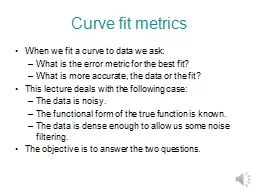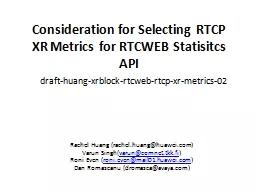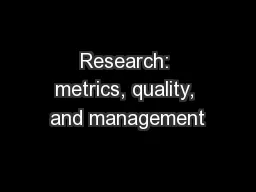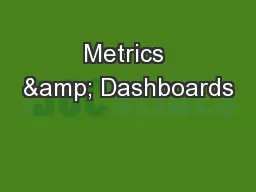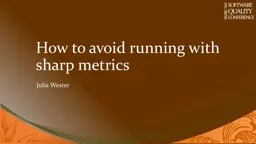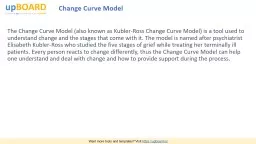PPT-Curve fit metrics
Author : sherrill-nordquist | Published Date : 2017-04-18
When we fit a curve to data we ask What is the error metric for the best fit What is more accurate the data or the fit This lecture deals with the following case
Presentation Embed Code
Download Presentation
Download Presentation The PPT/PDF document "Curve fit metrics" is the property of its rightful owner. Permission is granted to download and print the materials on this website for personal, non-commercial use only, and to display it on your personal computer provided you do not modify the materials and that you retain all copyright notices contained in the materials. By downloading content from our website, you accept the terms of this agreement.
Curve fit metrics: Transcript
Download Rules Of Document
"Curve fit metrics"The content belongs to its owner. You may download and print it for personal use, without modification, and keep all copyright notices. By downloading, you agree to these terms.
Related Documents

